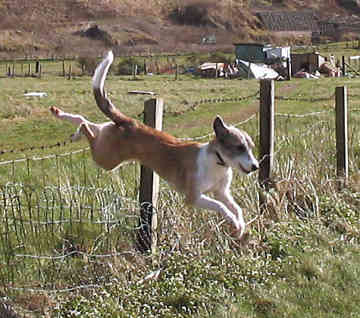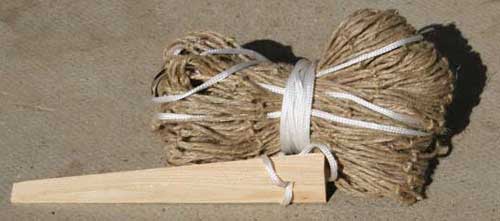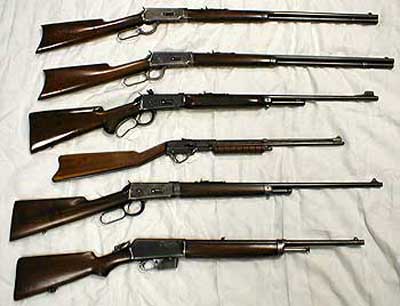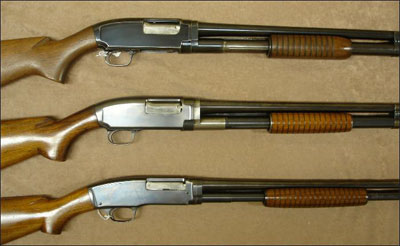Backyard Rabbit Keeping, Part 10/15 – Harvesting the Wild Rabbit
Wild rabbits are on the increase again in many parts of the country, to the dismay of those who would like to see them exterminated as a species. Many rabbit keepers have no time for wild rabbits and say that they should be stamped out, as do many farmers. When numbers reach plague proportions, rabbits are undoubtedly a pest. Despite this, they have a place in the countryside according to long tradition, which is respected by most countrymen. Many of our ancestors will have had good reason to be grateful for the rabbit, and many country dwellers have told me that they like to see a rabbit or two about; the fields seem empty without them. So rabbits have some friends.
If you have rabbits on your land it will be up to you to keep the numbers at a reasonable level, because if you let the numbers build up too far, you are likely to be unpopular with your neighbors and the local government, who will ask you to do something about them. Therefore it would be sensible to provide yourself with a few dinners, and thereby rule out the gassing of rabbits in their burrows, a method popular with the authorities.
Autumn rabbit was the traditional farmhouse dish, because the young rabbits had grown up by then. Also, many were shot when the corn was cut. Winter rabbits are best if you want to use the skins, as they will be molting in the summer. There used to be hats in our family made from wild rabbit skins.
There are more ways of catching rabbits than by gassing them; these date back to the days when hungry folk risked a great deal to provide a rabbit dinner for the family.
Dogs
 In Europe, Gypsies and poachers have always kept dogs bred for the purpose of catching rabbits quickly and quietly. The lurcher is the rabbit dog, and this is not a breed nor any special cross, but simply the name of the job, from the Romany “lur” – to rob. Some say a whippet or a greyhound cross is best. One of the first lurcher crosses was the Smithfield Collie which was a greyhound crossed with a sheepdog. This was a wonderful animal which apparently combined the virtues of both parents; it stole rabbits and also herded cattle to Smithfield from East Anglia, its home.
In Europe, Gypsies and poachers have always kept dogs bred for the purpose of catching rabbits quickly and quietly. The lurcher is the rabbit dog, and this is not a breed nor any special cross, but simply the name of the job, from the Romany “lur” – to rob. Some say a whippet or a greyhound cross is best. One of the first lurcher crosses was the Smithfield Collie which was a greyhound crossed with a sheepdog. This was a wonderful animal which apparently combined the virtues of both parents; it stole rabbits and also herded cattle to Smithfield from East Anglia, its home.
These dogs can be trained to bring back a rabbit to your feet, alive. They can be taught to catch rabbits by throwing a stuffed rabbit skin for them to retrieve, or being taken out with an older dog who knows the ropes – for example, the mother can be worked with her pup. A man I know was doing this training one dark night, and when he threw the skin, there was a squeak and his dog brought back a live rabbit; so he knew that the trick had worked! Sometimes a young dog will race alongside the rabbit, not knowing what to do next.
Feeding them meat encourages them to hunt, and you can use the dog to provide its own dinner.
Catching rabbits by stealth in this way can be brought to a fine art; the dogs know not to bark, and they used to be chosen for their nice quiet colors. Nowadays, when rabbits are considered a pest and it is easier to get permission to go hunting for them honestly, the possession of a lurcher dog is not so damaging to the reputation as it once might have been.
In Europe, for a long time after the onset of myxomatosis, there was no rabbit catching, except to put them out of their misery. Waves of the disease sweep over odd areas now at intervals, but each time the resistance of the animals seems to be better so that it would seem that there will always be healthy rabbits about for a dinner if you know where to look for them. And it seems that lurchers are still available too. They are advertised in various rural papers and range in price for young puppies of working parents to a fully trained young dog of one of the larger crosses, such as the greyhound/deerhound.
Snares
These can be bought in country shops, although the old-timers would have scorned to buy one. They made lines of them in the long winter evenings from six or eight strands of brass or copper wire with a cord at the end. For each snare two pegs are needed – making pegs from ash or hazel wood was another hobby.
[flv:making_rabbit_snares.flv 480 368]
It is a quick and clean death if it works properly. Many consider the snare is the most humane way of catching rabbits, if visited often, so that any animal not dead can quickly be put out of its misery.
Go out with an expert if you want to learn how to set snares in a rabbit run. You can see the little pathways that rabbits make in the grass, often by the side of a wood or a hedge. Choose a place between two “pads” or places where rabbits alight; they tend to follow in the same footsteps every time. The wire is set about a hands breadth (4 in) from the ground and rubbed in the earth first to get the human smell off it. The cord is pegged down firmly at the end with a big peg and a smaller one is set under the side of the loop to position it.
[flv:setting_checking_snares.flv 480 368]
The pear-shaped noose tightens when the rabbit goes into it, it is smoothed out every time after use to make it run smoothly. New wires can be passed through a fire to discolor them if they are too bright.
If snares are illegal or impractical in your area, there are a multitude of other (but more costly) traps available. Once again, observe all applicable regulations.
Netting
The long net is another way of catching rabbits (and other small game), and dates back to prehistoric times in several parts of the world, but also used by grounds keepers as a form of control and by European farmers who sold rabbits at market in order to pay the rent. Catches of up to 400 rabbits in one night were not unknown. Gamekeepers caught rabbits regularly to provide meat for the dogs.
Such nets can be a 100 yards long and about a yard high. It is set up in place with the aid of willow sticks which are pointed so that they can easily be pushed into the ground. The net is staked out overlapping the ground a few inches, so that the rabbits cannot escape under it.
Long nets are now made of plaited nylon, and some of them are intended for netting fish as well.
 |
This job is done at night when the rabbits are out of their holes feeding. The net is set up very quietly between the rabbits and their holes and then they are herded into it, and of course on the alarm they will naturally bolt for the burrow. You need a lot of people at this stage, rising out of the ground to walk the rabbits up to the net, or a very good dog that has been trained for the job.
Shooting
If you are a good shot this is probably the best way to kill rabbits; they never know what hit them. But shotguns emit a spray of pellets, and if you are too far away or if your aim is bad, it is easy to fill your quarry full of lead without killing him outright. Another disadvantage is that guns can be dangerous things to have about and must be treated with great respect. They should never be loaded until you are actually going to shoot. They must be kept out of the reach of children and locked up so that there is no danger of their being stolen.
 |
The 22 caliber rifle is a fine weapon for this task, but be certain to observe any and all local, state and federal restrictions on its ownership and use (in addition to hunting regulations). This is a good weapon for shooting small game for food, and useful in the right hands.
 |
The usual shotgun for shooting rabbits is the 12 gauge, or perhaps the 410 if you want something lighter. There is a certain recoil from a shotgun which can be a nuisance until you get used to it. Shotguns are deadly at short range but they are not so likely to raise such a state of nerves in the police as are rifles and pistols. Ammunition is widely available and comes in many varieties, which can make this tool useful for a broad range of applications.
To shoot rabbits with a shotgun you need to know their habits and be good at creeping up, “gliding with stealthy tread” to get within range. In our part of the world, a drystone wall gives good cover. My father used to squeak by sucking the back of his hand noisily and the rabbits would come towards him out of curiosity.
- Why Why Keep Rabbits?
- Rabbits Past and Present
- Some Basic Information
- Making a Start
- Housing
- Feeding
- Growing Crops for Rabbits
- Breeding
- Health
- Harvesting the Wild Rabbits
- The Harvest
- Using Rabbit Meat
- Fur Production
- Showing
- Angoras
Further Research:
   |